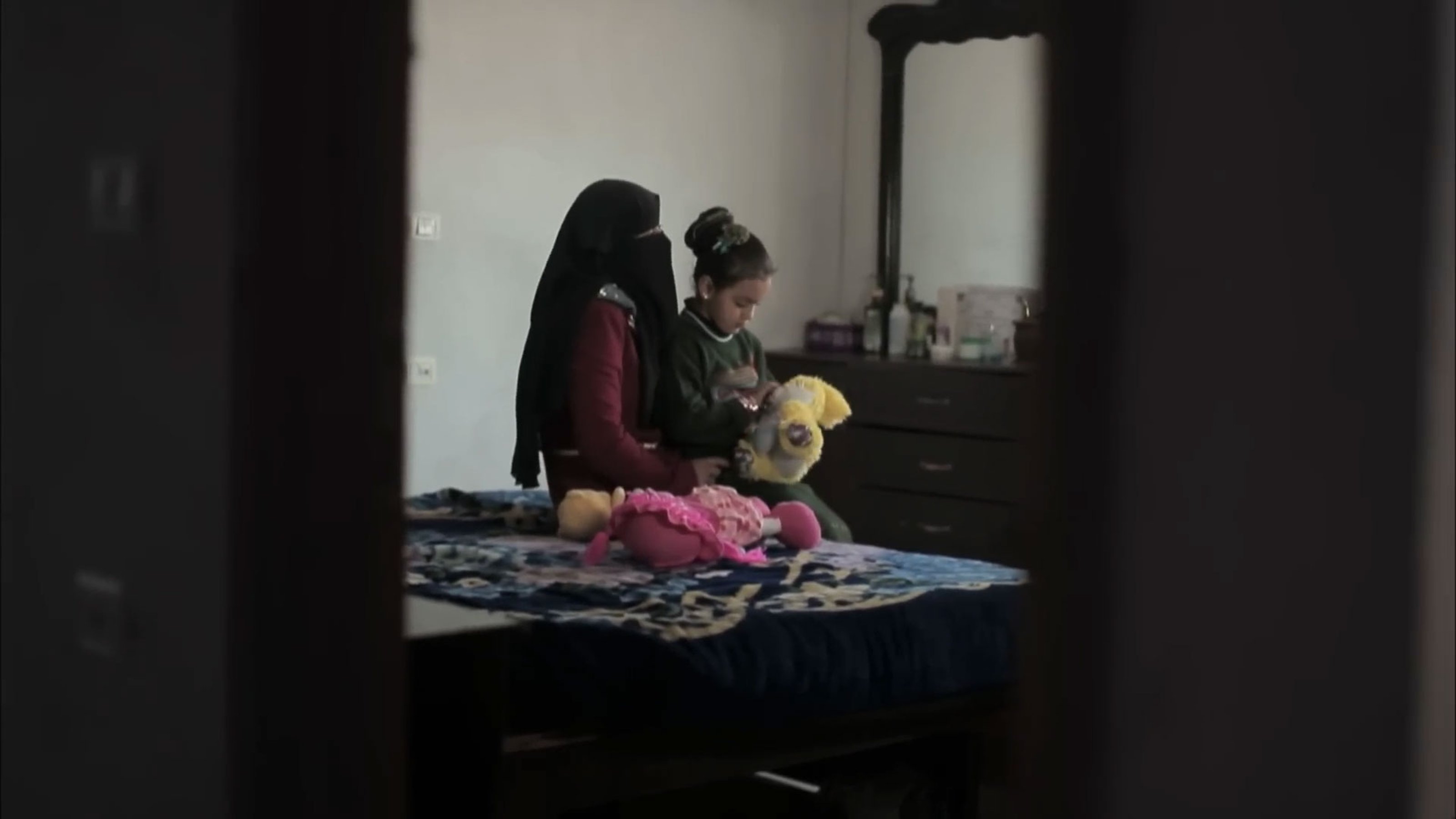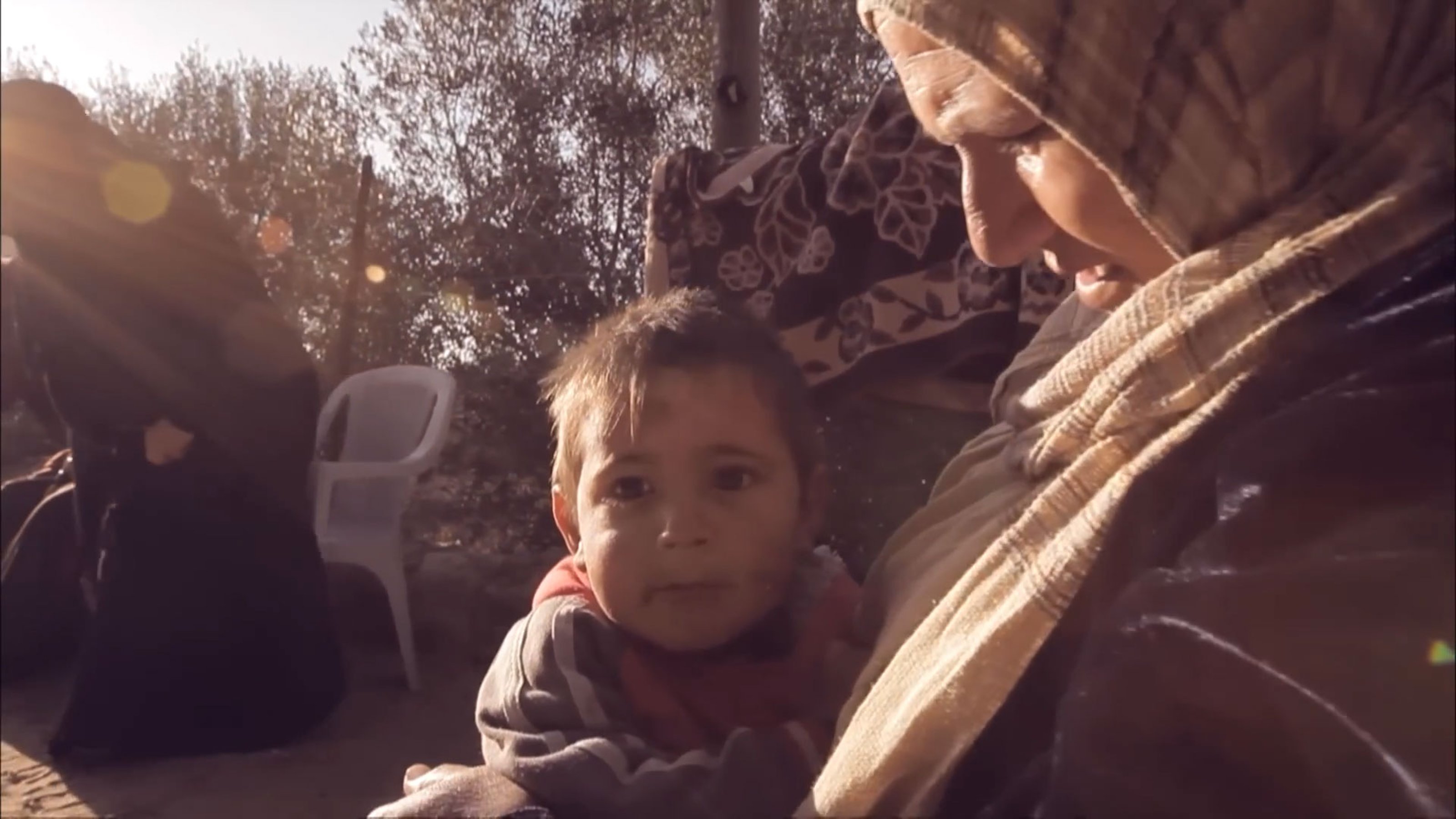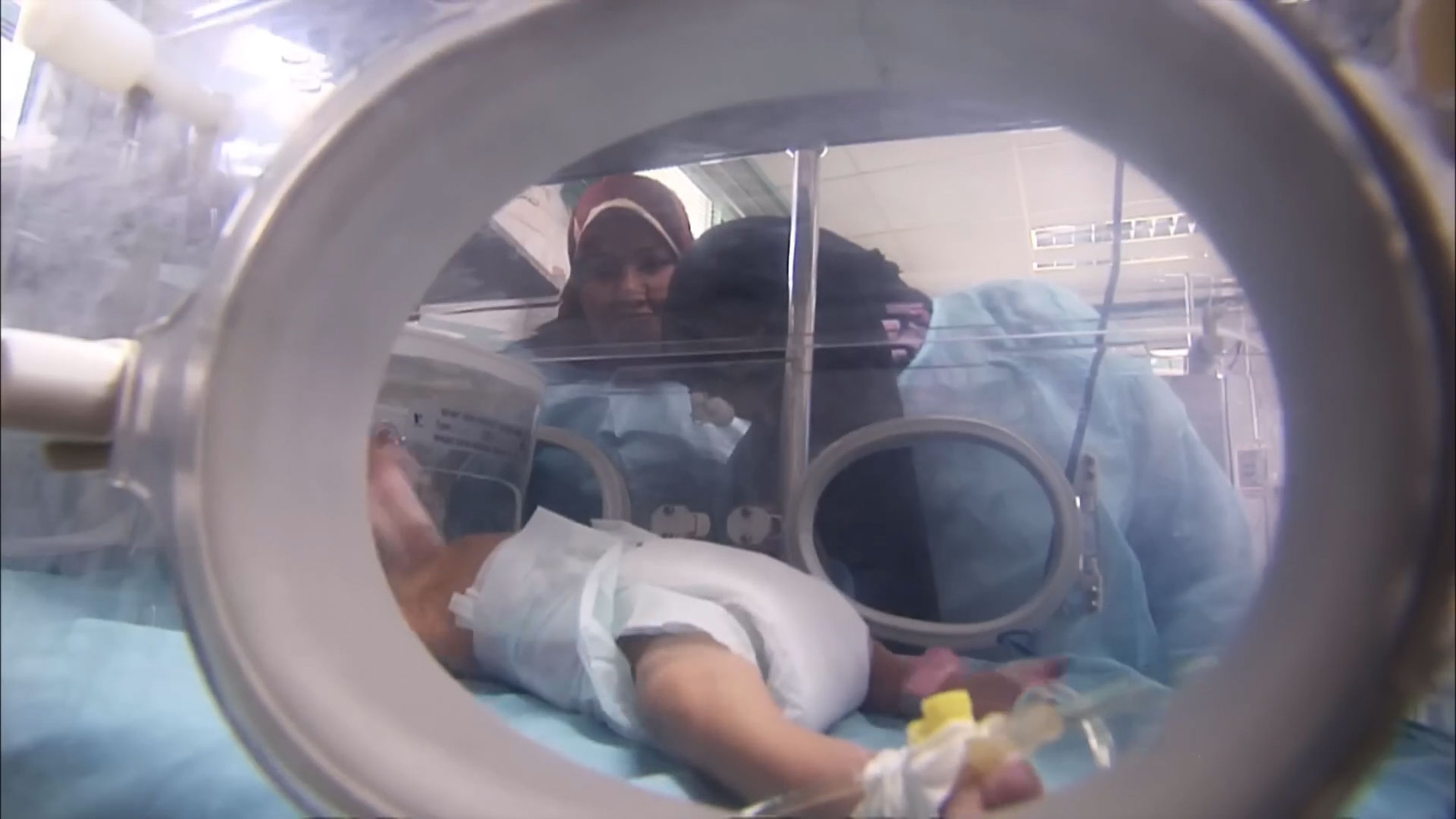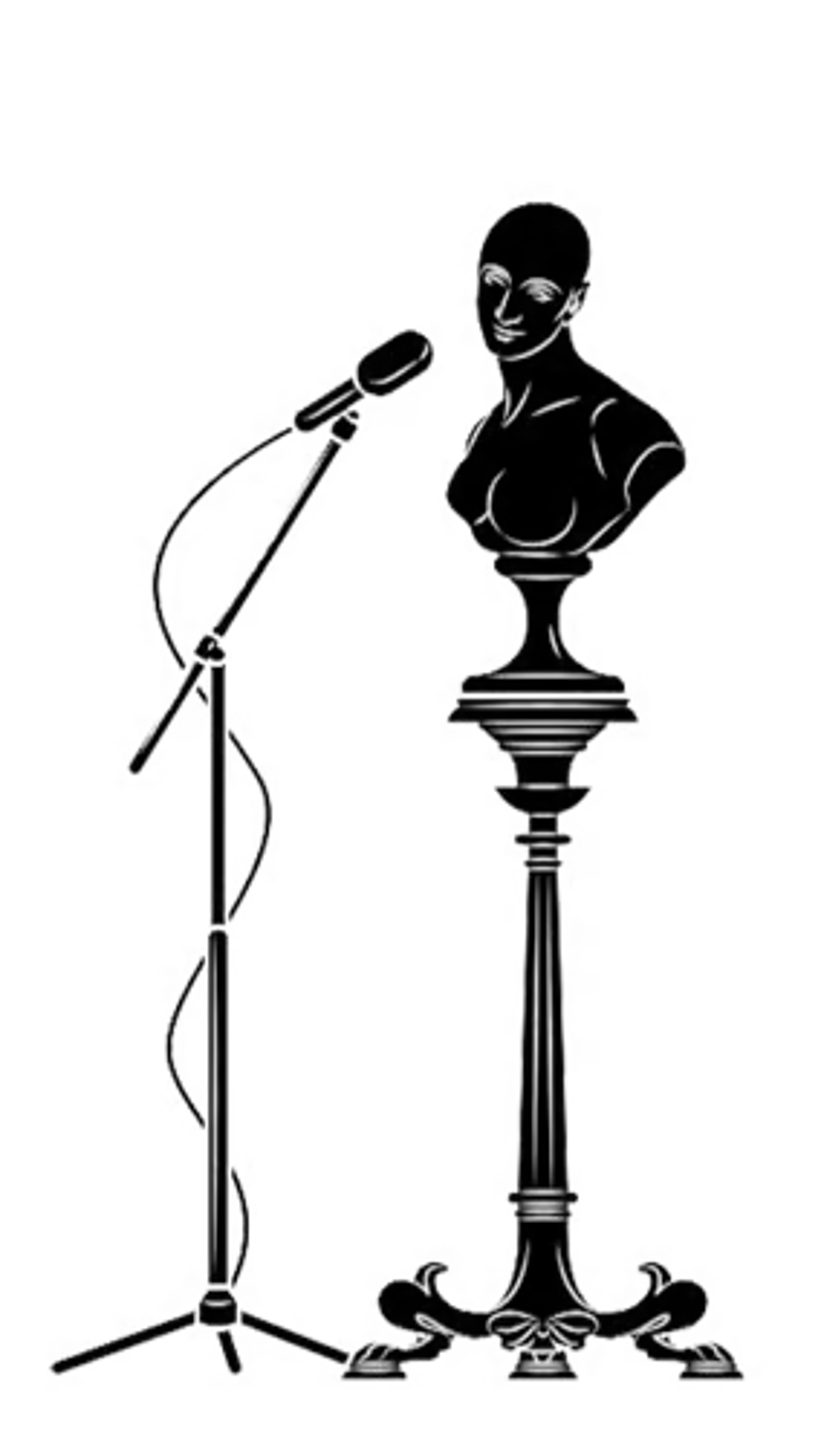How is Palestinian life affirmed under conditions of death, destruction, and debilitation? What scenes of life emerge amid and in spite of colonial violence and in a context where a population is subjected to a state of capture and incremental genocide? In a place where a settler-colonial regime is determined to paralyze the infrastructures and bodies that reproduce life, both biologically and socially, how does life persevere against all odds?
Leaking out of a body into a candy wrapper, a plastic ballpoint pen, or a bottle, unidentifiable to the lenses of security cameras, hidden underneath layers of clothes subjected to thorough searches, moved past the armed guards and highly securitized gates of the prison to occupied villages and across militarized checkpoints, and finally reaching the fertility clinic before it is hosted by the prisoner's wife's ovum through assisted reproductive technologies—this is the journey of a specimen of semen smuggled out of an Israeli prison, a journey in which the viscous matter circumvents the carceral barriers of the settler-colonial state that subjects Palestinian prisoners to a state of capture. The movement of fluids from bodies to bodies, through assisted human and technological means and across settler security apparatuses is a journey in which precarious bodies, matter, and environments enter into a web of codependency and relationality to sustain life in circumstances where life is made unlivable.

The first reported case of a childbirth from sperm smuggled from an Israeli prison is that of Muhannad Al-Zaben, born to Dallal Al-Zaben and Ammar Al-Zaben in August 2012. The birth of Muhannad, whose father, Ammar, is serving a life sentence in Hadarim prison, represented a miraculous event of defiance in the face of the grim reality of everyday colonial violence in Occupied Palestine. Since then, it has been reported that over 110 children have been conceived in the same way from across different governorates of Occupied Palestine, the West Bank, the Gaza Strip, East Jerusalem, and the occupied interior.1 What was at first deemed a “miracle” became a phenomenon involving the use of reproductive technology, referred to as tahrib al nutaf, a practice that is recognized socially and legally authorized through religious rulings (fatwas). The most recent case of this practice is the birth of quadruplets to the wife of prisoner Ahmad Al-Shamali, Rasmiya Al-Shamah, who currently resides with her children in Shujaia in Gaza City.2


In July 2014, Ayelet Shaked, the then member of the Knesset representing the right-wing party the Jewish Home, went on social media to call for the killing of all Palestinian people. For Shaked, the Palestinian people are the enemy, including the “mothers of the martyrs” who send their children “to hell with flowers and kisses.”3 Palestinian mothers, she added, “should follow their sons, nothing would be more just. They should go, as should the physical homes in which they raised the snakes. Otherwise, more little snakes will be raised there.”4 The statement was published a day before the Palestinian teenager Muhammad Abu Khudair was kidnapped and burned alive by a group of six Israeli youths and a few days before the launch of one of the deadliest and most destructive military offensives against Gaza. Shaked became the Israeli minister of justice less than a year later.
Shaked's statement underscores how settler colonial societies like Israel are, to use Achille Mbembe's words, “societies of enmity.”5 The desire to continually invent and fixate on the natives as objects of terror, and the fantasy of genocide that is attached to it, occupy the political and social imaginary of the Israeli settler colonial state. Such a fantasy, latent at times and manifest at others (as in Shaked's statement above), feeds the necropolitical impulses of the state in legal, political, and existential ways. Not only are Palestinians as a wholesale racialized population deemed enemies of the state; the figure of the woman and the child are particular signifiers of the “enemy's” reproductive capacity to live on, to mutate.
While Shaked's call for targeting the reproductive capacity embodied in the figures of the mother and the child is particularly explicit, it is not exceptional. In 2009, a series of T-shirts were printed and worn by Israeli soldiers showing children in the crosshairs of a sniper rifle with the slogan “Better Use Durex” and “The smaller they are, the harder it is.” Another such T-shirt shows a pregnant woman as a target, accompanied by the text, “Two kills, one shot.” The T-shirts were released just after the Israeli offensive against Gaza in January of that year, in which the IDF had cold-bloodedly targeted civilian homes, schools, playgrounds, and UN compounds where children and civilians sought refuge under the pretext that children were being used as “human shields.” The designation of Palestinian children as human shields illustrates how, in the militarized imaginary of the Israeli state, children are stripped of their status as children and are “turned to metal, to steel” that belongs to the “machinery of bombardment.”6

The targeting of the pregnant mother and the child in these examples is part and parcel of a broader settler-colonial project of capturing reproduction through colonial violence. The scale and multiple dimensions of reproductive injustices in Occupied Palestine are complex and shifting, and too expansive to map in detail here. However, I will briefly sketch some of their contours in order to situate sperm smuggling within this scene of reproduction that is heavily regulated, politicized, and made dangerous and precarious.
As the extensive work of Nadera Shalhoub-Kevorkian demonstrates, rather than seeing women and children as “victims” of the occupation, we need to examine how both the domain of reproduction and children's lives themselves are crucial sites that reveal the logics and operations of Israeli settler violence.7 The bio- and necropolitical capture of reproductive capacities takes various forms across the occupied territories, including military attacks on maternity wards and hospitals in Gaza, the refusal to grant newborns ID cards, limited access to medical supplies, and impediments to movement at checkpoints in emergency situations, including childbirth. All of these practices testify to how colonial violence affects reproduction on both structural and cellular levels.


Against the Israeli state's repeated investments in Palestinian death, fast and slow, the smuggling of sperm is a gesture in which the prisoners, their wives, their children, and the social relations organized around them obstinately affirm life in this extraordinary state and by extraordinary means. The different forms that capture takes—capture as incarceration; capture as colonial violence's hold at the most intimate and molecular levels; capture as the arrest of movement behind bars, through separation walls, and across checkpoints; capture as entrapment in the alternation between life and death—are circumvented but ultimately not yet overcome. They are circumvented through a breaking out, a leak that disorients the violent events of incarceration and settler colonialism, a cut through the enclosure that creates an opening toward a futurity that the Israeli state is adamant about foreclosing.
In her analysis of the 2014 Israeli attack on Gaza, Jasbir Puar, in her book The Right to Maim, argues that the debilitation of Palestinian bodies and infrastructures, a biopolitical strategy of the Israeli occupation, is aimed at the capture not only of life but of resistance as well.8 For Puar, debilitation encloses the Palestinian population in a state that is neither life nor death. This state of neither/nor becomes a “chronic state of being” that forecloses futurity. However, Puar also asks, “What are the productive, resistant, indeed creative, effects of [Israeli] attempts to squash Palestinian vitality, fortitude, and revolt?”9 While her work ultimately does not attend to this question, I take it as a key point of reflection in this essay. Rather than an effect of Israeli attempts to squash Palestinian resistance, sperm smuggling is an affirmative practice that is born from within conditions of woundedness and out of Palestinian fortitude, simultaneously. It is a creative practice that attests to the valence of minor rebellious acts that Israel's inhuman biopolitics have failed to squash.

The rhetoric of futurity in Palestinian public discourse, which hails children born of sperm smuggling as “ambassadors of freedom,” might be read in Lauren Berlant's sense, as indexing a cruelly optimistic attachment to a fantasy that assigns the figure of the child the position of the bearer of a future of freedom.10 The figure of the “ambassador of freedom” might also be misconstrued as the messenger of a scripted future, as a positive investment in birthing the nation. I contend, however, that it is the symbolic significance of the practice of sperm smuggling, as an affirmative ethical and political practice, rather than the figure of the child per se, that conjures the possibility of a future of freedom from the colonial present. The life of an infant, a life deemed impossible under conditions of incarceration and occupation, is socially upheld as “a life that will have been lived” in dignity and freedom. This is what Butler calls life's “future anterior”—that is, the presupposition that “this will be a life that has been lived” and therefore will be a life recognized as a life and sustained as such.11 The child who is conceived against all odds and in spite of conditions of debilitation belongs to a growing generation, one that for Palestinians signals the possibility of a freedom that will have been lived and that is on the horizon.
